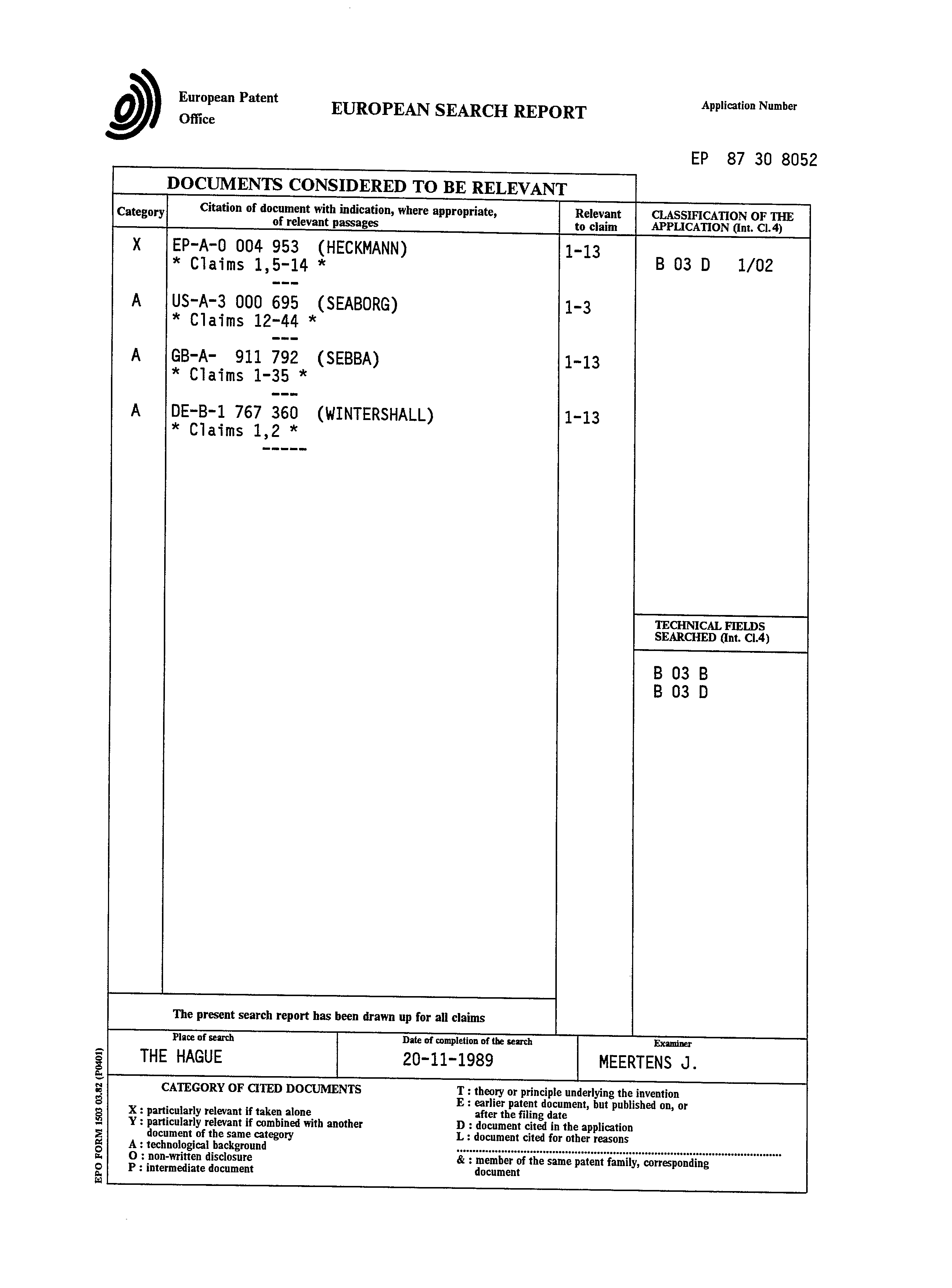| (19) |
 |
|
(11) |
EP 0 261 847 A3 |
| (12) |
EUROPEAN PATENT APPLICATION |
| (88) |
Date of publication A3: |
|
07.02.1990 Bulletin 1990/06 |
| (43) |
Date of publication A2: |
|
30.03.1988 Bulletin 1988/13 |
| (22) |
Date of filing: 11.09.1987 |
|
| (51) |
International Patent Classification (IPC)4: B03D 1/02 |
|
| (84) |
Designated Contracting States: |
|
DE FR IT |
| (30) |
Priority: |
23.09.1986 GB 8622843
|
| (71) |
Applicant: British Nuclear Fuels PLC |
|
Risley
Warrington
Cheshire, WA3 6AS (GB) |
|
| (72) |
Inventors: |
|
- White, David Anthony
London W10 6PJ (GB)
- Taylor, John Martin
Ramsbotton§Lancashire (GB)
|
| (74) |
Representative: McCormack, Derek James et al |
|
British Nuclear Fuels plc
Intellectual Property Manager
Head Office
Dalton House
Risley, Warrington WA3 6AS
Risley, Warrington WA3 6AS (GB) |
|
| |
|
| (54) |
Separation of matter by flotation |
(57) Matter is floated to the surface of a liquid by bonding ions to the surface of the
matter to give the matter a charge, and forming a froth with the aid of a frothing
agent having groups of opposite charge to the ions so that the frothing agent bonds
to the matter and is carried in the froth to the surface of the liquid. By removing
the froth the matter can be separated from any inert matter present in the liquid.
The oxidation state of the surface of the matter may be changed before bonding takes
place with the ions to one which facilitates that bonding. The matter can be particulate
or dissolved ions. For example, uranium dioxide particles are oxidised with hydrogen
peroxide, sodium carbonate added to produce a negatively charged uranyl carbonate
complex and a froth formed with the aid of cetyl trimethylammonium bromide. Cationic
groups in the latter bond to the uranyl carbonate complex, causing the uranyl carbonate
complex to be concentrated in the froth at the surface of the liquid. The froth is
then skimmed off to remove the uranium dioxide particles.

